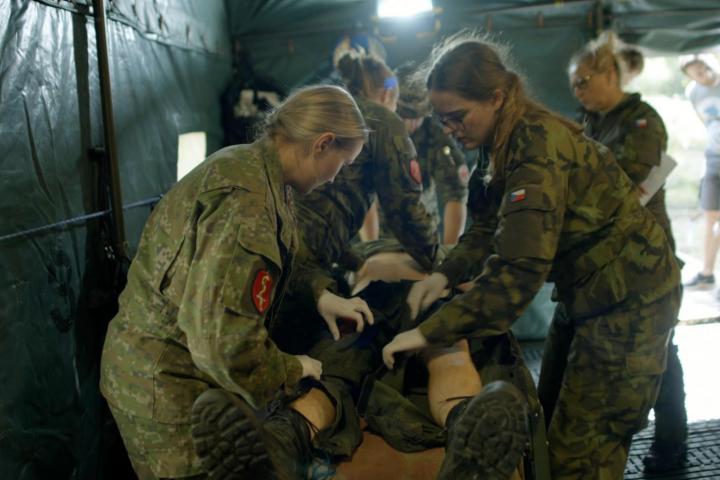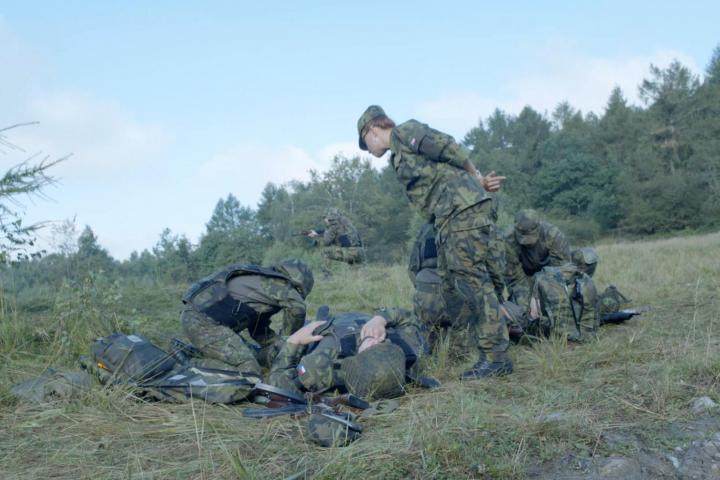A team of CTU researchers and students participated in the exercise of the University of Defence in the military training area Tisá
A team of researchers and students from the Faculty of Electrical Engineering of CTU took part in an exercise of the Faculty of Military Health of the University of Defence in the military training area Tisá. The exercise included field tests of a prototype of the Digital Triage Assistant system, discussions with experts in the field of military medical rescue and tests of military equipment related to the Digital Triage Assistant project.
In the case of defence projects, intensive cooperation between system developers and users is essential. This is exactly what is being achieved in the Digital Triage Assistant (DTA) project, which involves the cooperation of CTU in Prague, Johns Hopkins University, the University of Defence, the Czech Army, the NATO Allied Command Transformation Innovation Hub and the Def Sec Innovation Hub. The aim of the project is to create technology for monitoring soldiers' vital signs to help in their treatment in case of injury and thus increase the likelihood of their survival. More information can be found here.
Photo: CTU in Prague and University of Defence
"Immediate feedback from the soldiers, combat lifesavers, doctors and specialists at the medical rescue system on the proposed system features enables the rapid development of a prototype that is the most useful in practical use. In addition, contextual knowledge of how things work in military practice is very important for team members," says assoc. prof. Miroslav Bureš from the System Testing IntelLigent Lab at the Department of Computers, Faculty of Electrical Engineering, CTU.
During the exercise, members of the team combined from researchers and students from the Faculty of Electrical Engineering of CTU in Prague got more knowledge of the process of training military paramedics from a soldier's injury to his treatment on the field dressing station or discussed the entire prototype with an expert group of CLS (combat lifesaver) instructors.
"Another important part was the practical tests of the first version of the sensors used in the project in combination with standard military equipment. In the field test, for example, the team tested the compatibility of the sensors with the bulletproof vest in various situations, such as traversing the terrain or running," Colonel Hynek Schvach from the Department of Military Medical Service Organisation and Management of the Faculty of Military Health Sciences, University of Defence describes the further course of the event.
In the current prototype of the DTA system, the FlexiGuard system is used as a set of sensors. "This system enables the measurement of a wide range of vital signs with great accuracy and in very difficult conditions. For example, the system has been tested during missions of the fire brigade or with an anti-chemical unit. In the next phase of the project, the team plans to develop more compact sensors that can be placed, for example, under a bulletproof vest," says Dr. Pavel Smrčka from the Department of Information and Communication Technologies in Medicine at the Faculty of Biomedical Engineering of the CTU.
"This project originally started as a theoretical transatlantic collaboration, but thanks to the support of NATO, the Czech Armed Forces and UNOB, it has become a great example of successful civil-military cooperation. I think that we have set a new precedent for all other research and other projects," adds Dr. Kristina Soukupová, President of DefSec Innovation Hub.


